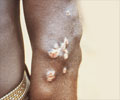Machine learning and whole-genome sequencing can improve the detection of infectious disease outbreaks within hospital settings.

‘EDS-HAT can detect transmission of various pathogens. It may soon expand to include sequencing of respiratory viruses, including COVID-19.’
Read More..




“The current method used by hospitals to find and stop infectious disease transmission among patients is antiquated. These practices haven’t changed significantly in over a century,” Lee Harrison, MD, senior author and professor of infectious diseases.Read More..
“Our process detects important outbreaks that would otherwise fly under the radar of traditional infection prevention monitoring.”
The Enhanced Detection System for Healthcare-Associated Transmission (EDS-HAT) combines genomic sequencing and machine learning connected to EHR data. When the sequencing identifies two or more patients in a hospital with identical strains of infection, machine learning quickly mines those patients’ EHRs for commonalities.
This process needs clinicians to notice that two or more patients shave a similar infection and alert their infection prevention team.
“This is an incredibly labor-intensive process that is often dependent upon busy health care workers noticing a shared infection between patients to begin with,” said lead author Alexander Sundermann, MPH, CIC, FAPIC, a clinical research coordinator and doctoral candidate at Pitt Public Health.
Advertisement
UPMC Presbyterian Hospital ran EDS-HAT with a six-month lag for a few pathogens linked to healthcare-acquired infections nationwide while also maintaining real-time, traditional infection prevention methods. The team analyzed how will EDS-HAT performed.
If EDS-HAT was running in real-time, researchers analyzed that 63 transmissions of infectious disease from one patient to another could have been prevented. Also, the technology could have saved around $692,000.
Researchers plan to introduce EDS-HAT in real-time at UMPC Presbyterian Hospital to improve future infection prevention and control programs. According to researchers, the original EDS-HAT will soon expand to include sequencing for respiratory viruses, including COVID-19.
Source-Medindia












